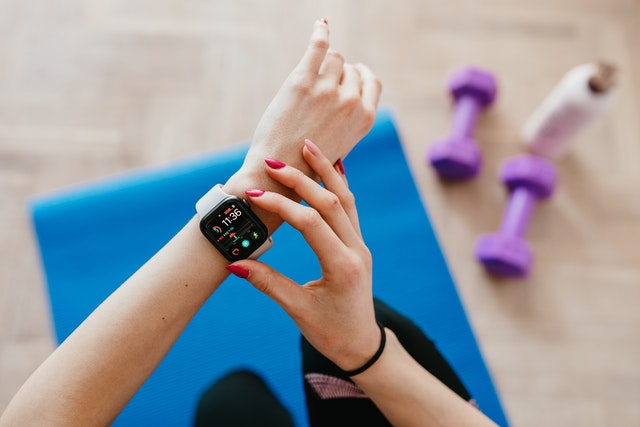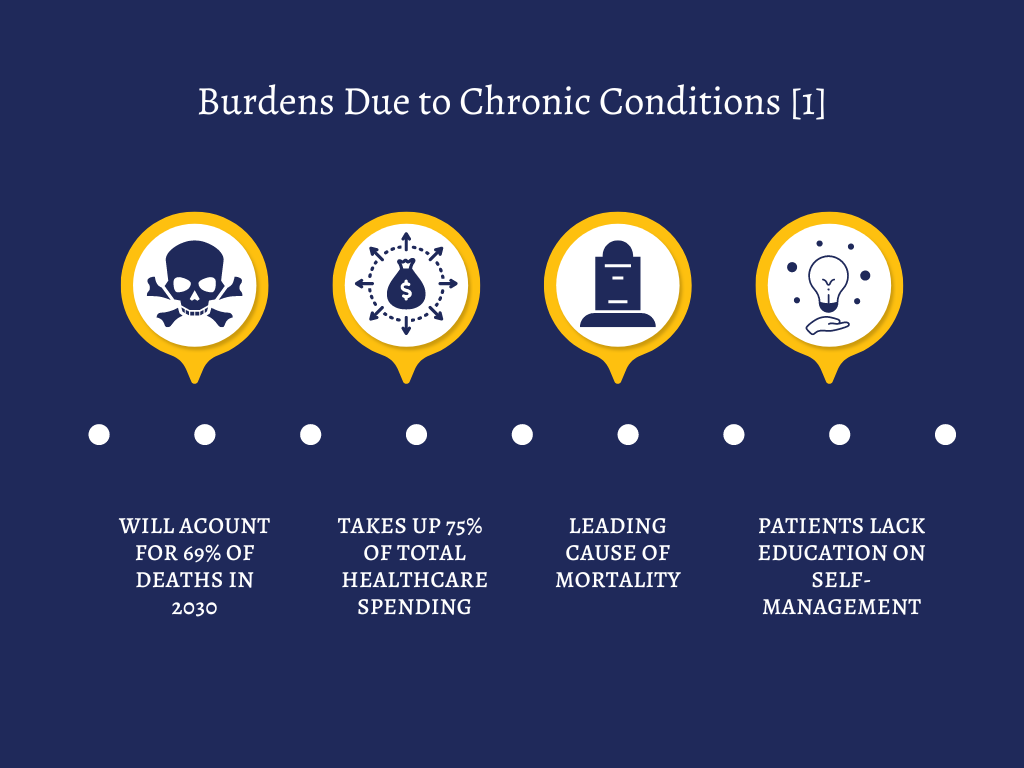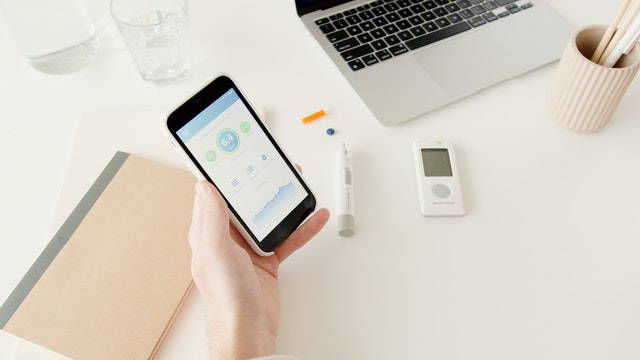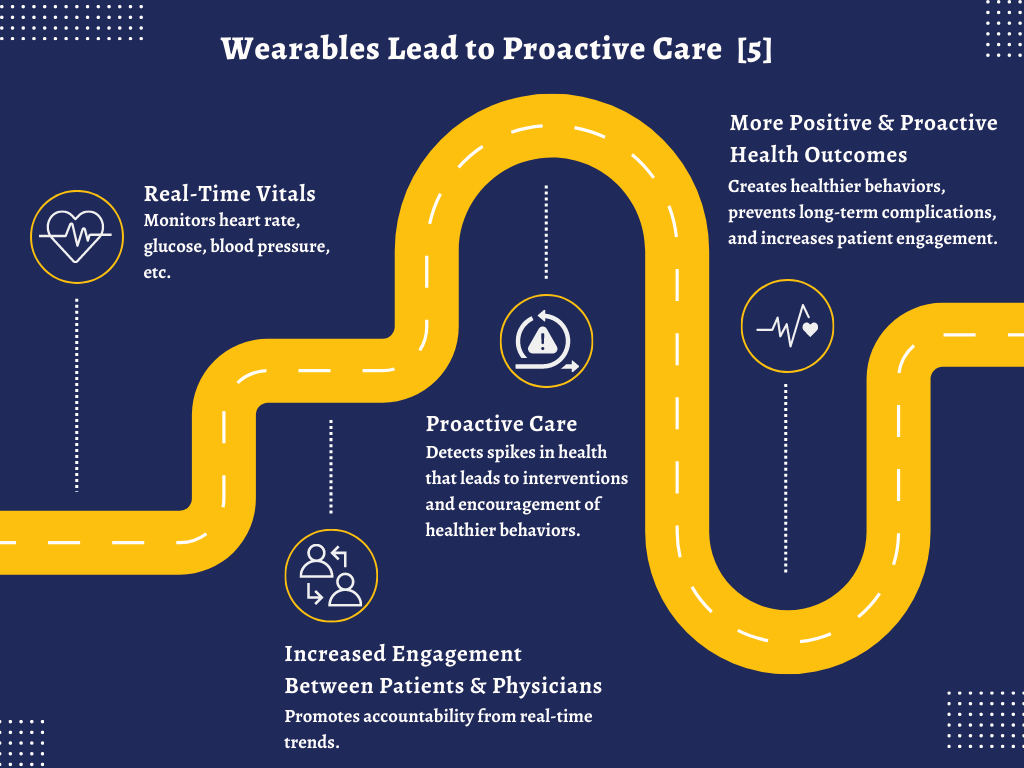
Introduction
Remote monitoring continues to be mentioned in the healthcare industry due to its promise of providing proactive care. Currently, chronic conditions are leading as the cause of death; by 2030 they are expected to cause 69% of deaths [1]. This is concerning because patients with chronic conditions such as heart disease and diabetes can have a better prognosis with long-term lifestyle changes. However, this requires the patient and provider to be more proactive in the patient’s care. Increased proactiveness is achievable with remote monitoring advancements such as AI monitoring and wearable technology.

Background
Increased Burden of Chronic Conditions
Chronic conditions are burdening the healthcare industry. In the US, their treatment costs account for 75% of healthcare spending [1]. Concerningly, more than half of Americans have a chronic condition and 30% of them have multiple [2]. This problem is expected to get worse due to the increased aging population and hospitals being overwhelmed with patients [2]. Furthermore, the time between visits can lead to drastic changes in health that can worsen a patient’s health outcome and lead to even more costly emergency visits. The lack of consistent care has costly effects, especially on chronic patients who need continuous monitoring. Furthermore, there is no telling what the patient is doing to manage their care outside of their primary care office. Patients often face difficulty managing their treatment plans without provider engagement [2].

Delayed Care
Moreover, COVID continues to leave long-term effects. During the pandemic, 41% of Americans had pushed off getting medical care [3]. Patients with chronic conditions were more likely to delay care. Furthermore, one in three people between 50 to 80 years delayed their care due to COVID [3]. This has long-term negative effects and can lead to increased costs and worse health outcomes for patients. When patients delay care, they can have longer recovery times, more visits to the ER, and negative health outcomes. Therefore, there needs to be a way for patients to maintain better control of their care, and for providers to be more engaged. Remote monitoring allows for an effective approach to preventive and proactive care.
Solutions
AI Interventions
Remote monitoring with AI implementation is an effective approach to providing proactive care to patients. Doctors can obtain real-time information from continuous vital monitoring such as blood pressure, oxygen levels, heart rate, and more [4]. AI can be used to accurately detect increased risk and any potential complications by making connections between real-time data. This allows for preventive care since the care team and patient can be alerted either for a check-up, an ER visit, or a telehealth visit to adjust the treatment plan. Remote monitoring effectively increases proactive care by allowing clinicians to respond before adverse health effects. AI can also recommend the patient to make changes, perform certain activities, and send alerts for reminders. This will make it easier for patients to follow their treatment plan due to increased self-management tools and the AI integration promoting more positive behaviors [4].

Wearables Provide Real-Time Updates
Wearables are effective at providing clinicians with real-time data from tools such as glucose monitors, heart monitors, blood pressure cuffs, and more [5]. These vitals provide clinicians with current trends on a patient’s conditions and allows them to receive data in-between visits. Wearables also promote accountability since clinicians can monitor if the patient is actually following the treatment plan [5]. This promotes patients to be more active and take greater control of their health and lifestyle choices. Furthermore, wearables detect any spikes or increased complications in a patient’s health, which can allow for immediate intervention [5]. Lastly, wearables assist chronic patients in monitoring their vitals consistently and can promote healthier behaviors since patients have to assess their fitness, glucose, blood pressure, and heart rate numbers. Providers can collaborate with patients to encourage healthier habits and early intervention.

Conclusion
Increasing burdens from chronic conditions and delayed care can be costly and overwhelming to the health care industry. Remote monitoring relieves this burden by providing long-term management of chronic diseases, encourages healthy behaviors from patients, and detects increased complications and risks in patients. Furthermore, it promotes engagement between clinicians and patients which leads to more personalized and proactive care. Therefore, health IT professionals should continue to promote remote monitoring technologies that lead to more patient-centric solutions.
References
- https://caretakermedical.net/remote-patient-monitoring-in-chronic-care/#:~:text=Remote%20patient%20monitoring%20makes%20for,be%20managed%20by%20a%20specialist
- https://medcitynews.com/2022/05/its-time-to-rethink-chronic-care-management/
- https://www.healthcareitnews.com/news/how-remote-patient-monitoring-moving-mainstream
- https://medcitynews.com/2021/06/remote-patient-monitoring-coming-of-age-in-an-ai-driven-world/
- https://www.mozzaz.com/blog/device-enabled-remote-patient-monitoring